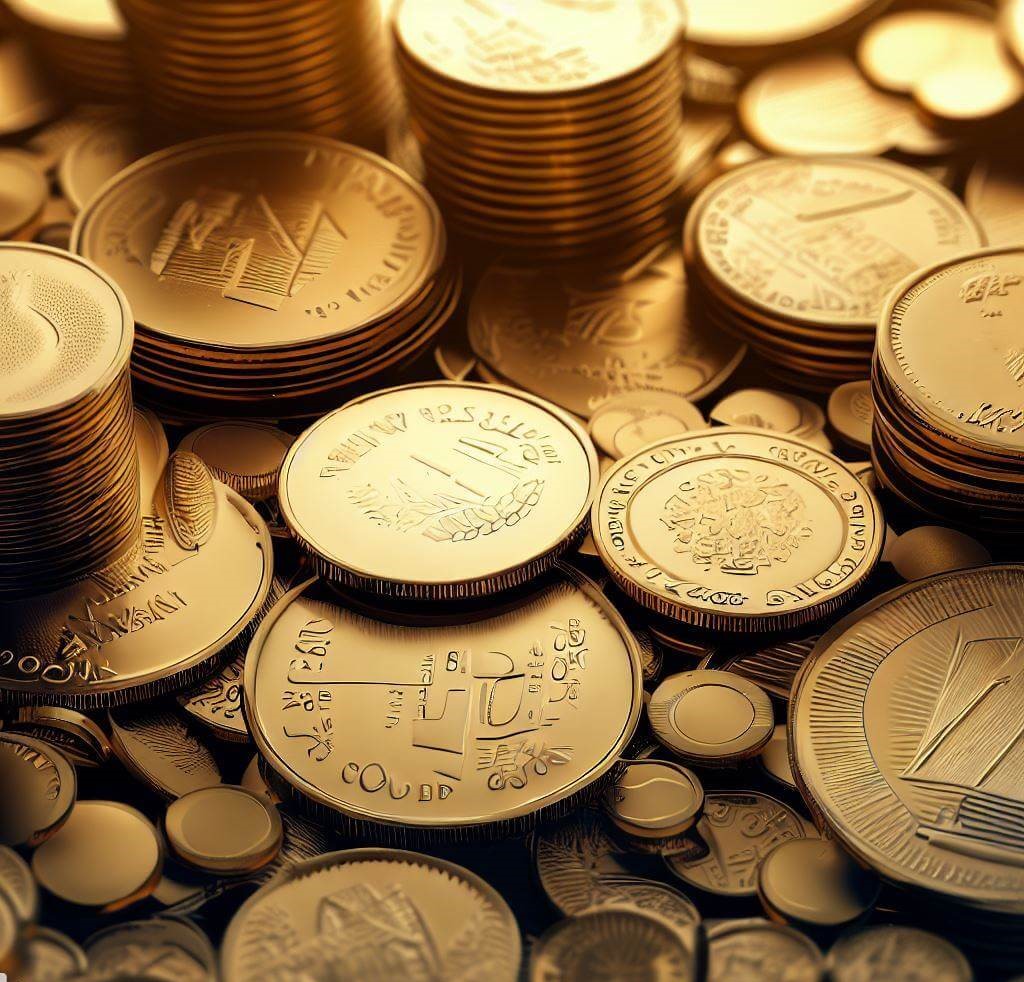Understanding the Basics of a Gold IRA
What is a Gold IRA?
A Gold IRA is a retirement investment option that allows you to invest in physical gold and other approved precious metals. This differs from traditional IRAs where your investments are in stocks, bonds, or mutual funds.
Benefits of a Gold IRA
A Gold IRA offers several benefits including diversification, hedge against inflation, and potential for high returns. These unique benefits make it an attractive option, especially for freelancers.

The Freelancer Economy: A Brief Overview
The term “freelancer economy” is used to describe the increasing prevalence of independent professionals who take on contract or temporary assignments. These freelancers, sometimes referred to as gig workers, are becoming an integral part of the global workforce, with some studies suggesting that they could make up to 50% of it by 2027.
The freelance economy is diverse and dynamic, encompassing a vast range of industries and roles. It includes writers, designers, programmers, consultants, and many more professionals who have chosen a less traditional career path.
Freelancing offers considerable benefits. For one, it provides unparalleled flexibility. Freelancers can set their own hours, choose their clients, and often work from anywhere with an internet connection. They’re not tied to a desk or a 9-5 schedule, and their earning potential is only limited by their ability to find and complete work.
However, the freelance lifestyle isn’t all rosy. It also comes with unique challenges, particularly in terms of financial stability and planning for the future.
Why Gold IRA is a Perfect Match for Freelancers
As independent contractors, freelancers don’t have access to the employer-sponsored retirement plans that permanent employees do. This lack of a formal retirement plan means that they’re entirely responsible for their own financial future. This is where a Gold IRA becomes a vital tool in a freelancer’s financial strategy.
Financial Uncertainty and How Gold IRAs Can Help
In freelancing, financial uncertainty is a constant companion. Income can fluctuate wildly from month to month, based on factors such as the availability of work, payment timelines, and market rates. This uncertainty can make it difficult for freelancers to plan for long-term financial goals, such as retirement.
A Gold IRA can provide a sense of financial security in this uncertain landscape. Unlike many investment options, a Gold IRA invests in physical gold and other precious metals, which have held value consistently throughout history. Even during economic downturns, when other assets might plummet in value, gold often remains stable or even increases in worth. This stability can provide a safety net for freelancers navigating the uncertain waters of the gig economy.
Diversification and Stability: Why Freelancers Need a Gold IRA
Financial advisors often recommend diversification as a key strategy for financial stability. This involves spreading your investments across a range of assets, reducing the risk that a decline in any one area will wipe out your savings. For freelancers, who already face income volatility, this diversification is even more critical.
A Gold IRA contributes to this diversification. It allows freelancers to include physical gold, a tangible asset, in their investment portfolio. Gold has a low correlation with other asset classes like stocks and bonds, meaning it often performs well when those assets are performing poorly. By adding gold to their portfolio, freelancers can build a more robust and resilient financial foundation.
Moreover, gold is known for its long-term stability. Despite short-term fluctuations, gold has maintained its value over centuries, offering protection against inflation and currency depreciation. This stability can be particularly attractive for freelancers looking to build a secure financial future amidst the unpredictability of their income streams.

The Freelancer’s Guide to Choosing a Gold IRA Provider
When it comes to selecting a Gold IRA provider, freelancers must pay careful attention. Making the right choice can help safeguard your retirement investment and ensure a smooth transition into this form of savings. Here are some crucial points to consider:
1. Reputation and Trust: Perhaps the most critical factor is the reputation of the Gold IRA provider. You can evaluate this by conducting thorough online research. Check out customer reviews and ratings on independent sites, read testimonials, and look at their Better Business Bureau rating. You should also check whether they are members of trusted industry associations such as the American Numismatic Association (ANA) or Industry Council for Tangible Assets (ICTA).
2. Policies and Fees: Fees are an inevitable part of investing in a Gold IRA. However, they can vary greatly from one provider to another. Some may charge a flat annual fee, while others might have a sliding scale based on the value of your account. You need to be clear about all costs, including setup fees, storage fees, and any miscellaneous charges. Understanding their policies is equally important. What are their delivery timelines? What kind of storage options do they provide? These are all critical questions to ask before making a decision.
3. Customer Service: Superior customer service is not just a luxury; it’s a necessity. The provider should be easy to contact, responsive to your queries, and patient in answering your questions. Their team should be knowledgeable and capable of explaining complex concepts in a manner that’s easy to understand.
4. Range of Investment Options: A Gold IRA provider should ideally offer a broad range of precious metals for you to choose from, including gold, silver, platinum, and palladium. This diversity allows you to diversify your portfolio further. Check whether they offer a variety of gold coins and bars approved by the IRS.
5. Security and Storage: When it comes to storing your precious metals, security should be a top priority. Most Gold IRA providers offer two options: commingled storage, where your assets are stored together with other investors’, and segregated storage, where your assets are stored separately. While segregated storage might cost more, it provides an extra layer of security. Ensure that the provider’s storage facilities are insured and have high-security standards.
6. Transparency: The provider should have a transparent process and keep you informed at every step, from the transfer or rollover process to how and where your gold is stored. Hidden costs or complicated procedures are red flags that should make you reconsider your choice.
Gold IRA Vs. Traditional Retirement Plans
Investing for retirement typically revolves around traditional retirement plans such as 401(k)s and Regular IRAs. However, the Gold IRA presents a unique alternative to these plans.
Traditional retirement plans are often tied to the stock market, meaning your retirement savings’ value fluctuates with the market’s performance. On the other hand, a Gold IRA is tied to the value of physical gold and other precious metals. This provides a cushion against market volatility, given that precious metals often move inversely to stock markets.
Also, traditional retirement plans offer a limited number of investment options, usually in stocks, bonds, and mutual funds. With a Gold IRA, you have a broader range of investment options, including different types of gold, silver, platinum, and palladium, enabling more personalized portfolio diversification.
Gold IRA Vs. 401(k)
A 401(k) is an employer-sponsored retirement plan, allowing employees to save and invest a part of their paycheck before taxes are taken out. Taxes aren’t paid until the money is withdrawn from the account.
The key difference between a Gold IRA and a 401(k) is in the types of investments each account allows. A 401(k) typically limits investment options to a pre-selected group of stocks, bonds, or mutual funds. A Gold IRA, however, allows for investment in physical gold and other precious metals.
Also, 401(k)s are traditionally tied to your employment. If you switch jobs or become self-employed (like freelancing), managing these accounts can be a hassle. In contrast, a Gold IRA is self-directed, providing you with greater control and flexibility over your investments.
Gold IRA Vs. Regular IRA
A Regular IRA, also known as a Traditional IRA, allows individuals to make pre-tax contributions to an account that grows tax-deferred. Taxes are only paid upon withdrawal, typically during retirement. Investment options in a Regular IRA usually include a range of stocks, bonds, mutual funds, and ETFs.
A Gold IRA, meanwhile, functions like a Regular IRA but is designed for holding precious metals. The key distinction is the type of assets you’re allowed to hold in these accounts. While a Regular IRA allows for a broad range of securities, a Gold IRA is used to buy and hold physical gold and other precious metals.
This investment in precious metals offers a level of portfolio diversification that’s difficult to achieve with a Regular IRA. Gold and other precious metals can provide a hedge against inflation and currency depreciation, protecting your retirement savings in ways that traditional securities cannot. The stability and enduring value of gold make a Gold IRA a compelling addition to any long-term investment strategy, particularly for those who prefer tangible assets and want an effective hedge against market volatility.
How to Set Up a Gold IRA as a Freelancer
Setting up a Gold IRA as a freelancer is relatively straightforward and can be completed in a few steps. Here’s how you can do it:
1. Choose a Reputable Custodian: Your first step in setting up a Gold IRA is choosing a custodian. The custodian is a financial institution that holds your IRA’s assets and ensures that your account complies with IRS rules and regulations. When choosing a custodian, consider their reputation, fees, customer service, and the range of investment options they offer.
2. Open an Account: Once you’ve chosen a custodian, you’ll need to open an account with them. This typically involves providing some personal information and completing an application, which can often be done online.
3. Fund Your Account: After opening an account, you’ll need to fund it. You can do this by making a contribution, transferring funds from another IRA, or rolling over funds from a 401(k) or other qualified retirement plan.
4. Choose Your Investments: After your account is funded, you can choose your investments. In a Gold IRA, this can include various types of gold, silver, platinum, and palladium. Your custodian may provide you with a list of approved precious metals to choose from.
5. Regularly Review Your Investment: Once your Gold IRA is set up, regularly review your investment. Consider your retirement goals, the performance of your investment, and your financial situation to ensure that your Gold IRA remains a beneficial part of your overall retirement strategy.
Common Misconceptions About Gold IRAs
While Gold IRAs can be an excellent investment tool, some misconceptions surround them:
1. Gold IRAs are Risky: Some people believe that investing in gold is risky because it doesn’t produce dividends or interest like stocks or bonds. However, gold is often considered a safe-haven asset because it tends to retain its value over time and can even increase in value during times of economic uncertainty.
2. Only Wealthy People Can Afford Gold IRAs: While it’s true that you’ll need some money to start a Gold IRA, you don’t need to be wealthy to do so. Many custodians have reasonable minimum investment requirements, making Gold IRAs accessible to a broad range of investors.
3. Gold IRAs are Complicated: While Gold IRAs have some unique rules compared to other IRAs, they are not overly complicated. A good custodian will guide you through the process and ensure that your account complies with all IRS rules.
4. All Gold Can Be Included in a Gold IRA: Not all gold qualifies for a Gold IRA. The IRS has specific requirements for the purity of gold and other precious metals included in a Gold IRA. Your custodian will provide you with a list of approved precious metals.
5. Gold IRAs are an All-or-Nothing Investment: You don’t need to put all your retirement savings into a Gold IRA. Most financial advisors recommend a diversified portfolio that includes a mix of assets, including stocks, bonds, mutual funds, and precious metals like those in a Gold IRA.

Real-Life Stories of Freelancers Benefiting from Gold IRAs
1. Embracing the Golden Stability: Sarah, a freelance graphic designer, decided to open a Gold IRA when she realized the volatility of her income was reflected in her traditional retirement savings. With her Gold IRA, she enjoyed the stability of knowing her retirement was backed by a tangible asset.
2. Riding Out the Recession: During the 2008 financial crisis, James, a freelance software developer, saw his traditional retirement savings dwindle. Having a Gold IRA cushioned him against the worst effects of the crash. As the value of gold soared, so did his retirement savings.
3. The Silver Freelancer: After a late start in freelancing, Jane, a freelance writer, was worried about her retirement. She decided to open a Gold IRA and invested in gold and silver. Despite starting late, she was able to accumulate a considerable nest egg thanks to the steady performance of precious metals.
Conclusion
In conclusion, Gold IRAs offer an enticing and viable alternative for freelancers looking for a stable and reliable retirement plan. With the benefits of stability, protection against inflation, and diversification, Gold IRAs can provide the security that freelancers need in an otherwise unpredictable professional landscape. As with all investments, it is crucial to do your research and choose a reputable custodian to manage your Gold IRA.
Frequently Asked Questions
1. Can freelancers have a 401(k) and a Gold IRA? Absolutely. Freelancers can have both a 401(k) and a Gold IRA. Diversification is key in any retirement plan, and having both can provide a balanced portfolio.
2. How are Gold IRAs taxed? Like other IRAs, Gold IRAs are typically tax-advantaged. Contributions may be made on a pre-tax basis (Traditional IRA) or after-tax basis (Roth IRA), and the investment growth is tax-deferred.
3. Are there any penalties for early withdrawal from a Gold IRA? Yes, like other types of IRAs, early withdrawals before the age of 59.5 may incur a 10% penalty. There are some exceptions to this rule, so it’s essential to consult with a financial advisor.
4. Can I add other precious metals to my Gold IRA? Yes, besides gold, you can also add silver, platinum, and palladium to your Gold IRA, as long as they meet purity requirements set by the IRS.
5. How often should I review my Gold IRA investment? Regular reviews of your Gold IRA investment are crucial. Many financial experts recommend reviewing your investment strategy at least once a year, or whenever there is a significant change in your financial situation or goals.




